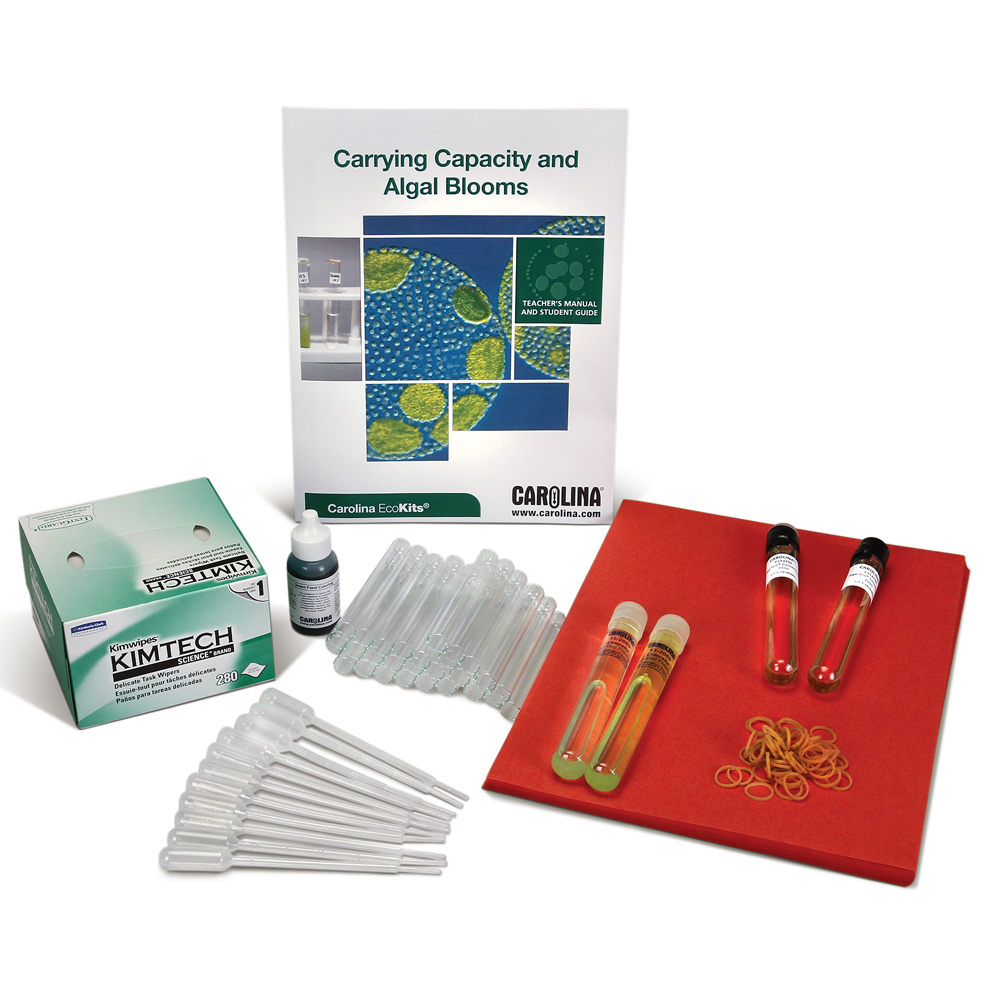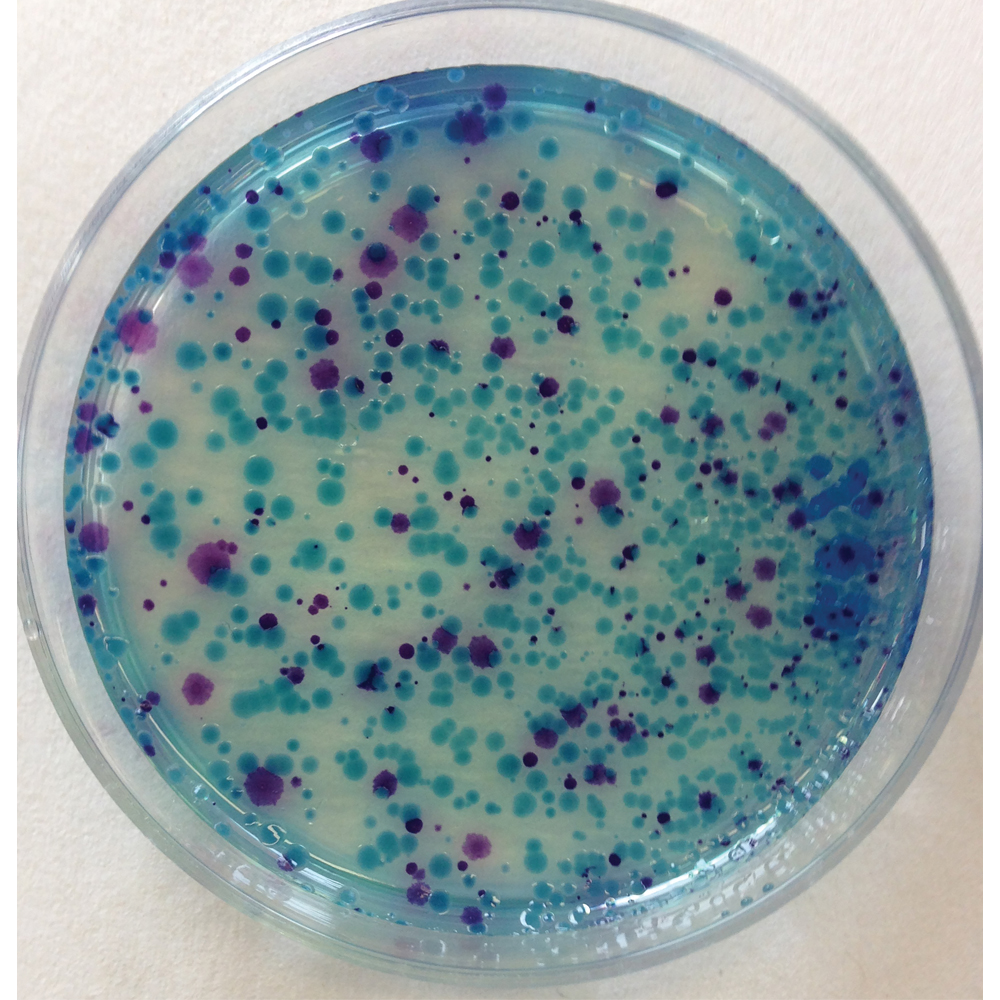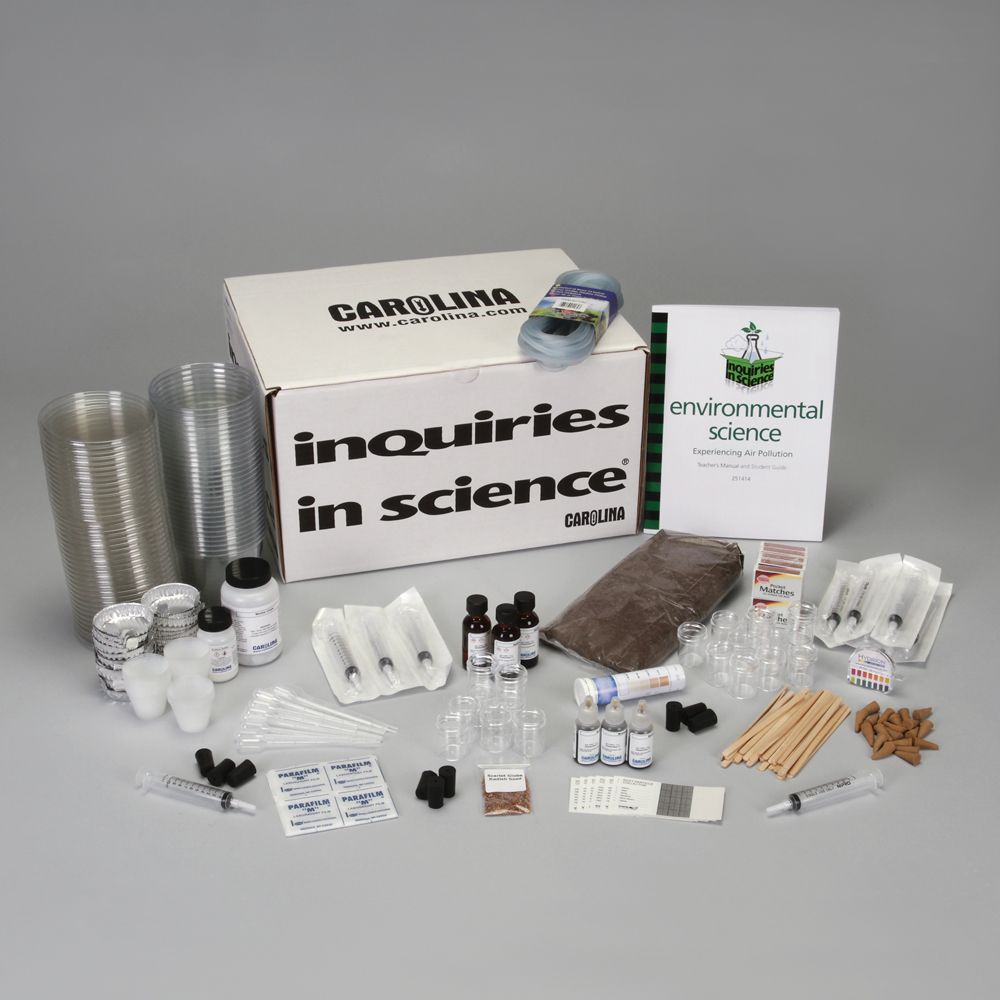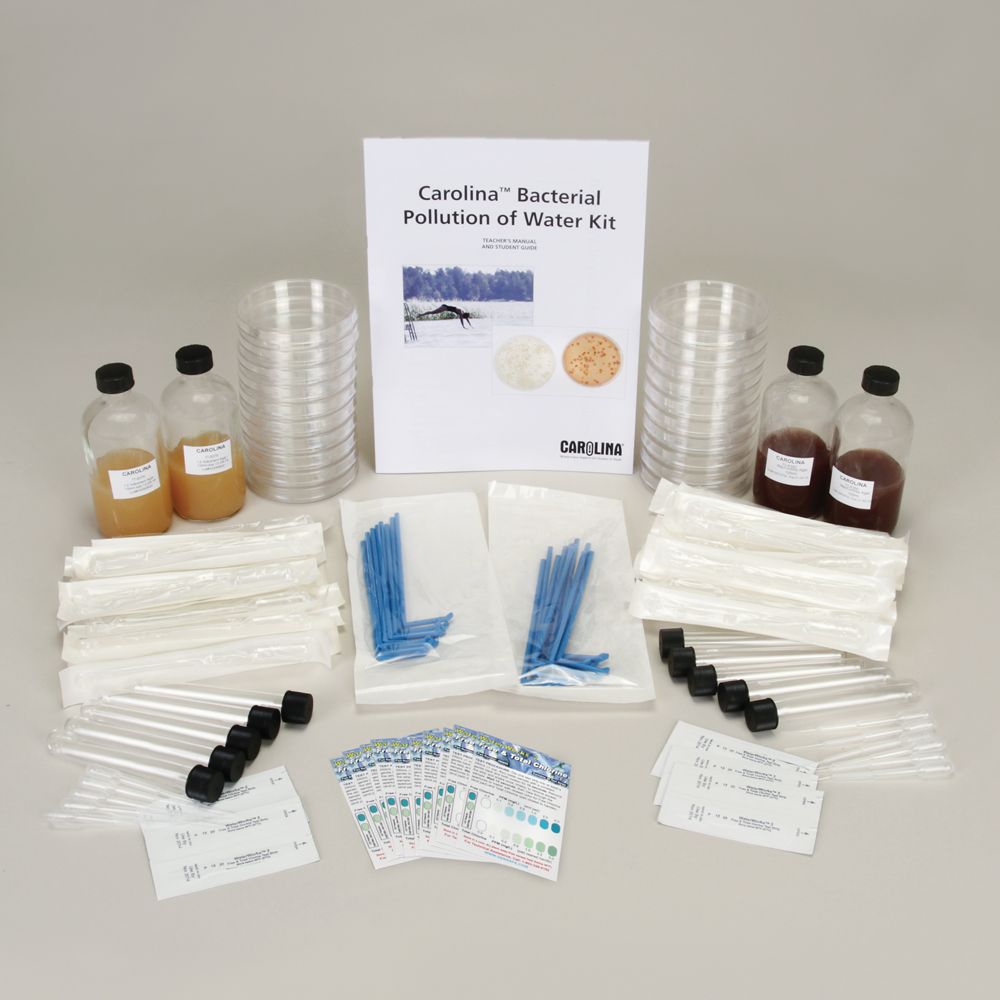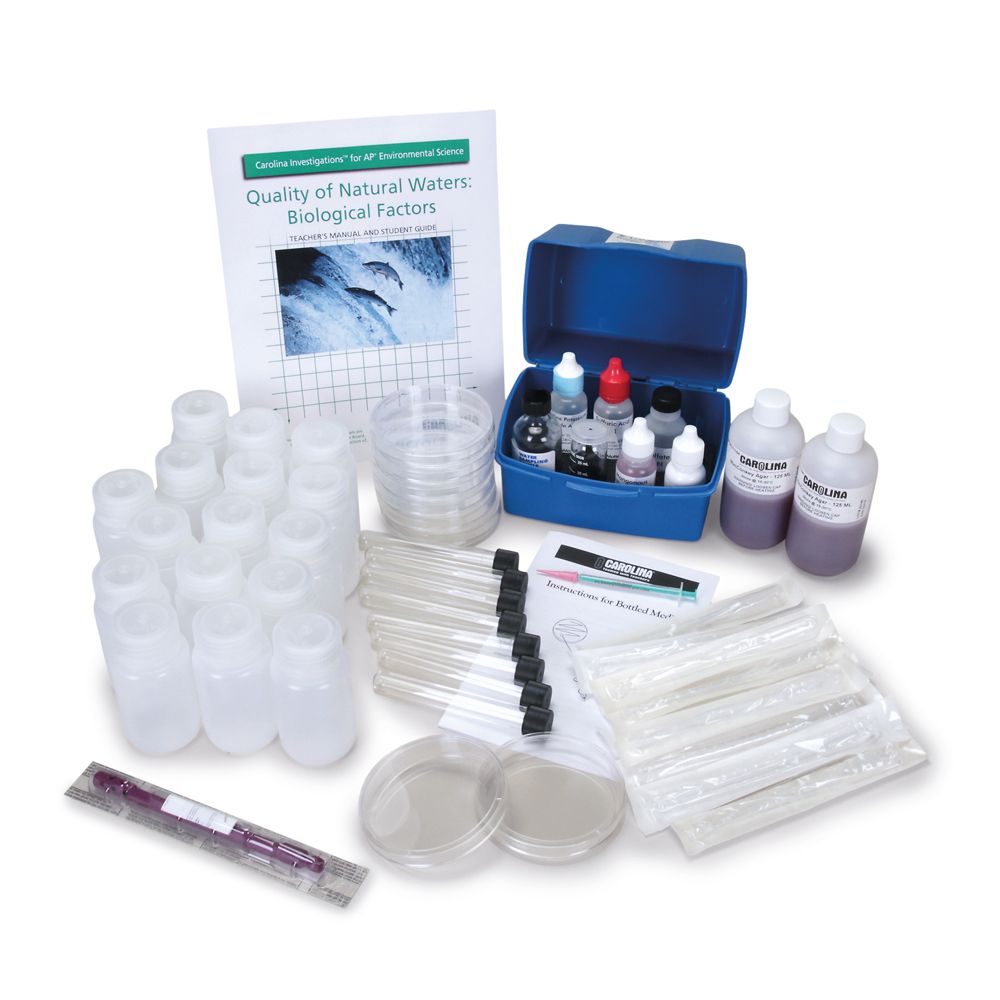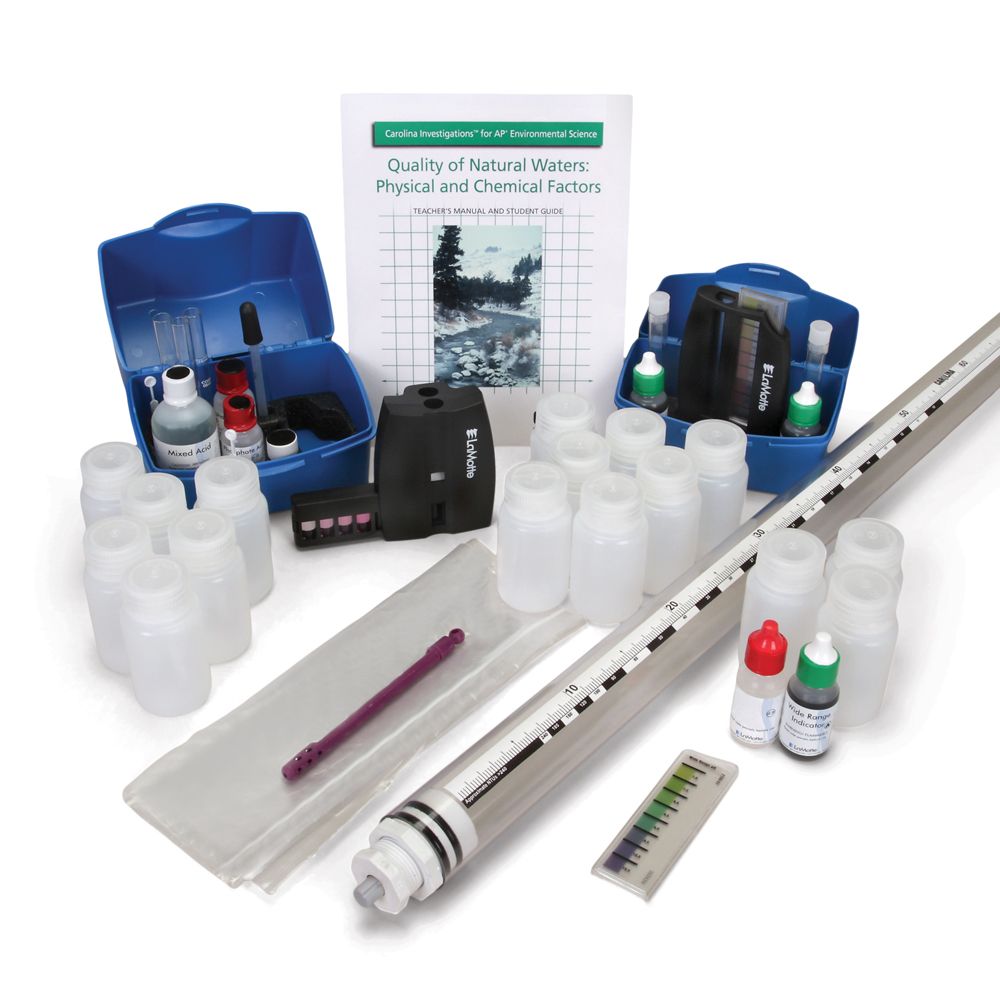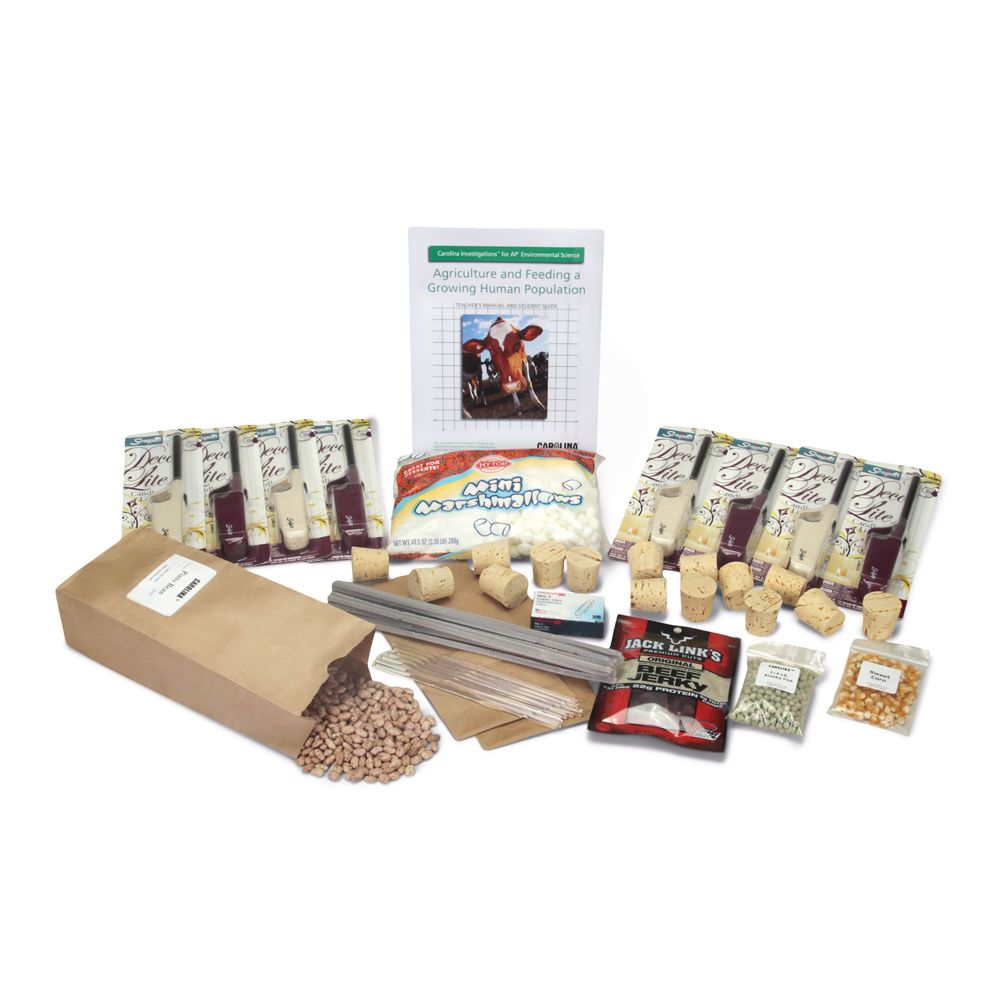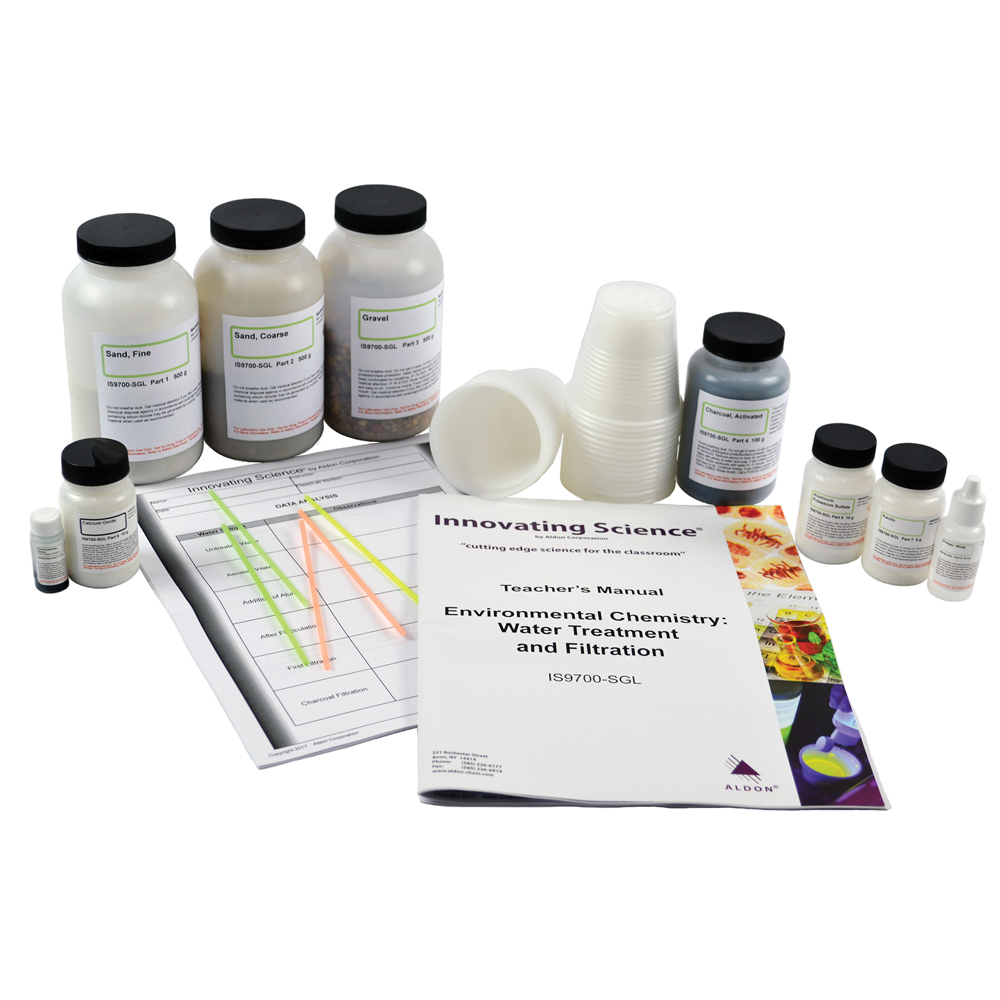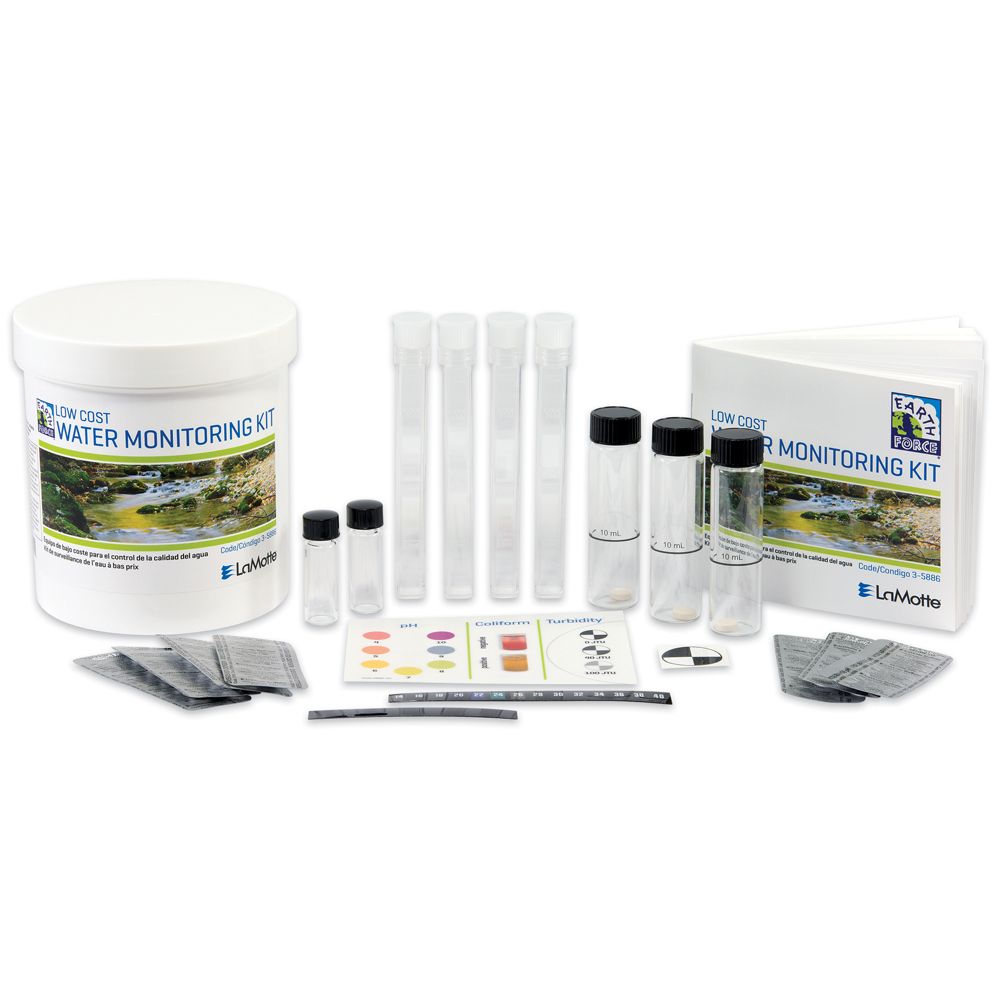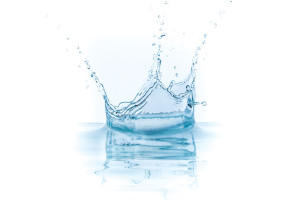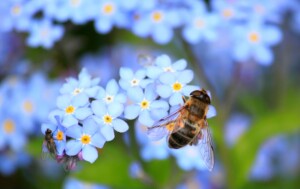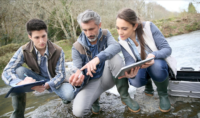Ecology is the foundational study of how organisms interact with each other and the planet. A complete study of ecology may include investigating the biotic and abiotic factors of biomes, the structures of ecosystems, the processes at work within ecosystems, interactions among species in an ecosystem, and ecosystem sustainability. This complex topic is broken down into three sections: ecosystem structure, ecosystem interactions, and ecosystem sustainability.
This guide on ecosystem sustainability breaks down the important information students need to know, provides links to products and free digital resources, and includes suggestions for hands-on labs that reinforce student learning.
We have gathered a variety of products and resources to better help you teach this concept. They include:
- Investigations of ecosystem sustainability
- Additional products to help teach this concept
- Free resources for you and your students
The major areas covered in this topic are:
- Population Growth and Carrying Capacity
- Human Impact and Pollution
- Environmental Chemistry and Testing
- Sustainability
- Agriculture
Population Growth and Carrying Capacity
Using models containing either real organisms or simulated ecosystems students can study population growth, how the number of individuals in a population change over time, and carrying capacity, the number of individuals in a population that an ecosystem can sustain.
Estimating Population Size #187006
Beginning
Easy to Perform Requires little to no prior knowledge
Students explore and evaluate 4 sampling techniques that are used to estimate population size: transects, quadrats, mark and recapture, and removal sampling. Conducting multiple runs for each method, students estimate population cover, density, and size using basic algebra and graphing skills. Students share their data with other groups, compare their data to the actual numbers, and determine how accurate their estimates are.
Analyzing Population Growth Kit #251420
Beginning
Easy to Perform Requires little to no prior knowledge
In this laboratory activity, students model how the population of a bird species changes over time. They explore and build several mathematical models of population growth and generate J- and S-shaped population curves. Students then analyze the effects of resource quality on population by investigating the response of yeast culture growth to changes in environment, developing connections with the key concepts of logistic and exponential growth and carrying capacity. As a capstone exercise, students grow plate cultures and use them to test their own hypotheses on the effects of light intensity, nitrate, glucose, or lactose on yeast population growth.
Carrying Capacity and Algal Blooms Kit #187015
Intermediate
Easy to Perform Requires some background knowledge
An algal bloom scenario serves as the investigative phenomenon that students are tasked with explaining. To make sense of the phenomenon, students investigate growth in algae populations maintained in different concentrations of nutrient solution. Over the course of the investigation, students conduct experiments and analyze data to answer the driving question, “What effect will different nutrient concentrations have on the carrying capacity of algal populations?”
Population Growth and Carrying Capacity #187000
Intermediate
Easy to Perform Requires some background knowledge
The fast reproduction rate of duckweed makes it a perfect organism for studying population growth. Students first predict what changes will take place within a population in a closed system. They investigate their predictions by completing regular counts of the population over a 3- to 4-week period and then graph the population data, calculate growth rate, and determine the carrying capacity of the system.
Population Growth with Lemna Minor #181093
Advanced
For experienced high school and college classes
Requires some technical skill and background knowledge
Over a 4-week period, students conduct investigations and analyze the carrying capacity and biotic potential of a model plant species, Lemna minor (duckweed). They formulate a hypothesis, collect data, and analyze exponential and logistical population growth. They also discuss and apply knowledge gained from their experiments to a real-world scenario.
Human Impact and Pollution
Using models containing either real organisms or simulated ecosystems students can study population growth, how the number of individuals in a population change over time, and carrying capacity, the number of individuals in a population that an ecosystem can sustain.
Coliform Contamination Kit #187220
Intermediate
Easy to Perform Requires some background knowledge
Students investigate possible water source contamination by coliform bacteria. In the first investigation, students use sterile technique to collect water samples and plate them on selective media. The media allow students to differentiate between general coliform, Escherichia coli, and noncoliform bacteria colonies. After 24 to 48 hours, they analyze the results and compare their findings to local water quality standards for coliform bacteria.
In the second investigation, students analyze samples from a fictional location. Based on the results of their analysis, students infer potential sources of contamination and propose design solutions to reduce the environmental impacts of human activities linked to bacterial contamination of water. Students describe the importance of clean water to public health with the goal of answering the driving question, “How can we monitor a community’s water for coliform contamination?”
Oil Spill Bioremediation #181324
Intermediate
Easy to Perform Requires some background knowledge
The role of bioremediation in the Deepwater Horizon oil spill (DHOS) serves as the investigative phenomenon as students conduct and analyze a controlled biodegradation experiment using drain cleaner microbes, corn oil, and a chemical indicator. Once students make sense of how the experiment serves as an oil spill bioremediation simulation, they ask questions and design their own experiments with biodegradation to see if they can make the simulation even more realistic. Next, they present their claims, evidence, reasoning, and arguments to their classmates. The investigation culminates in an assessment that has students interpret data from the DHOS, consider the role of bioremediation in oil spill cleanup, and summarize oil spill impacts on threatened and endangered species. Throughout the investigation students strive to understand the driving question, “How can microbes be used to clean up an oil spill?”
Experiencing Air Pollution Kit #251464
Intermediate
Easy to Perform Requires some background knowledge
Explore different types of chemical and physical air pollutants and research the sources of these pollutants, as well as the health hazards associated with them. Students test for ozone and particulate matter in their area and observe the effects of gases on the pH of water. To extend their learning, students design and conduct experiments to test the effects of air pollution on living organisms.
Bacterial Pollution of Water Kit #652704
Intermediate
Easy to Perform Requires some background knowledge
Students learn about the importance of clean water in human health, water treatment for microbial contamination, and one of the methods used to test the safety of water for human use. They then collect water samples and test them for chlorine and chloramines, bacteria, and coliform bacteria. Students next do research to discover the number of coliform bacteria allowed in water for various human activities. They gain valuable skills and experience in sterile technique and plating and culturing bacteria.
Air Pollution and Vehicle Emissions #181083
Advanced
For experienced high school and college classes
Requires some technical skill and background knowledge
Students measure atmospheric components to investigate some of the relationships involved in air pollution caused by burning fossil fuels. They record levels of ultraviolet light, temperature, and ozone and learn how environmental factors interact with fossil fuel pollutants to produce smog. Students then test car exhaust for carbon dioxide levels. They explore the Air Quality Index (AQI) and discuss the health hazards associated with fossil fuel pollution, along with steps that can be taken in daily living to reduce air pollution.
Wet Scrubbers and Air Pollution #181076
Advanced
For experienced high school and college classes
Requires some technical skill and background knowledge
Enable your students to construct a model wet scrubber that operates much like one on a coal-burning power plant. Students burn coal, observe how the scrubber removes particulates and pollutants, measure the scrubber solution’s pH change, and measure the mass of solid pollutants removed by the scrubber. They then evaluate the advantages and disadvantages of wet scrubbers and answer questions about fossil fuel use and air pollution.
Environmental Chemistry Testing
Students learn about ways to test the environment. This allows them to make inferences about the effects of pollutants and naturally occurring cycles.
Testing Water Pollution Kit #251415
Intermediate
Easy to Perform Requires some background knowledge
Explore the causes and effects of water pollution with this laboratory activity. Students first perform a serial dilution to grasp the concepts of ppm and ppb. They test the water in their area for contaminants, including dissolved oxygen, nitrates, and phosphates. The lab concludes with students designing and conducting their own experiment to determine the effects of water pollution on living organisms.
Quality of Natural Waters: Biological Factors Kit #180600
Intermediate
Easy to Perform Requires some background knowledge
This lab activity enables students to monitor water quality and determine the Water Quality Index (WQI) for several local test sites. Students gather samples and test for dissolved oxygen, coliform bacteria, biochemical oxygen demand, total solids, and change in temperature.
Quality of Natural Waters: Physical and Chemical Factors Kit #180602
Advanced
For experienced high school and college classes
Requires some technical skill and background knowledge
In this lab activity, students monitor water and determine the Water Quality Index (WQI) for local test sites. They test samples from each site for turbidity, nitrates, phosphates, pH, and temperature change.
Cultural Eutrophication and Biodegradable Waste #181074
Advanced
For experienced high school and college classes
Requires some technical skill and background knowledge
Students perform 2 activities to examine eutrophication and its effects on water quality. The link between biodegradable waste and dissolved oxygen is examined during a guided activity. An inquiry activity allows students to investigate the effect of excess nutrients on algae growth in a model pond.
Sustainability
Sustainability describes the use of a resource in a manner that maintains an ecological balance. By exploring this important topic students are able to gain insight both as environmental scientists and as people who live on this earth.
Hydroponics and Sustainability Kit #331146
Beginning
Easy to Perform Requires little to no prior knowledge
Explore hydroponics and explain its uses and limitations as a tool to help sustain human populations and manage natural resources. In this investigation, students design a solution for producing enough food for growing populations and the shift from rural to urban communities. They grow plants hydroponically in a modified ebb and flow system, analyze data from their hydroponic systems, and make recommendations about using hydroponics.
Resource Sustainability #187214
Intermediate
Easy to Perform Requires some background knowledge
Students explore sustainable resource use practices by modeling the harvesting and management of several natural resources. They simulate the harvesting of timber as well as the excavation and retrieval of precious metals, gemstones, and fossil fuels from an ecosystem. They must confront the challenges involved with obtaining important natural resources while simultaneously attempting to protect and conserve the environment.
Conserving Resources Kit #251419
Intermediate
Easy to Perform Requires some background knowledge
To explore the concept of conservation, students first calculate the ecological footprint produced from their everyday tasks such as driving and eating. Then, using a Web site, students estimate a more complete footprint to determine the number of planets needed to sustain the human population. In the final activity–creating a sustainable simulated island community through role-playing–students follow a set of guidelines as they make decisions that determine how sustainable their island community is from one generation to the next.
Agriculture
Agriculture and Feeding a Growing Human Population #181080
Advanced
For experienced high school and college classes
Requires some technical skill and background knowledge
Engage students with activities that allow them to evaluate the trade-offs between agricultural production and the environment. Students first construct a calorimeter from a soda can to calculate the energy and food calories contained in different foods. They next determine how much food is required to support 1 person, then calculate how much agricultural land is needed to produce enough food to feed the world population.
Water Treatment and Filtration Kit #652781
Advanced
For experienced high school and college classes
Requires some technical skill and background knowledge
Students develop knowledge of the processes performed at a water treatment plant and learn the reasons for each process. They perform, on a small scale, several of the procedures that occur in a water treatment plant on “polluted” water. They examine the changes in the water after each treatment step is performed. Students also observe physical characteristics of water, such as clarity, color, and odor and how they are affected from the beginning of the treatment process until the end.
Additional Products
Carolina offers a variety of products to fit your needs. Check out our selection of products to supplement your ecosystem lessons.
Additional Ecology Support
We have free resources to help you teach this concept, including:
- Free activities
- How-to videos
- Helpful buying guides
- Infographics
Free 3-D/NGSS Activities for Ecosystem Processes
Carolina Essentials™ are free, hands-on, NGSS-based activities. These activities are designed to make implementing 3-D learning easy. Students make sense of phenomena while learning concepts essential for understanding ecosystem processes. You can browse all of these Carolina Essentials or try one of these:
More Articles
- Altering Carrying Capacity by Changing Environmental Factors
- Human Impacts: How Can Our Impacts Be Assessed
- Practice with Population Growth Curves
- Estimating Populations Using Mark-Recapture
Support Videos
Unsure how to set up a river tank or care for aquatic snails? These videos can help.
Buying Guides
Choosing the appropriate equipment for your labs can be a challenging task. Our buying guides are designed to make your decisions easy. Review Carolina Recommended Microscopes or our Ultimate Lab Basics Buying Guide.
For More Guidance
These are our top picks. If you don’t see what you’re looking for, we’ll be happy to help you find the right activities and kits to simplify your planning and implementation. If you have questions, please contact us at product@carolina.com.




